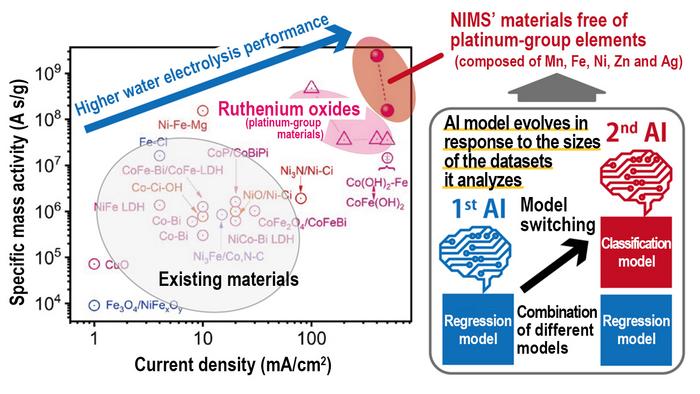A team of researchers at NIMS has developed an AI method that speeds up the process of finding materials with specific properties. This breakthrough led to the discovery of efficient electrode materials for water electrolyzers, which don’t rely on costly platinum-group elements. These materials could help lower the cost of producing green hydrogen, an eco-friendly energy source.
Green hydrogen production through water electrolysis is crucial for achieving carbon neutrality. However, current electrolyzers use expensive platinum-group elements to speed up a crucial reaction. To find cheaper alternatives, researchers are exploring materials made of more common elements. But manually sifting through all possible combinations is slow and expensive.
NIMS’ team developed an AI technique that predicts materials with desired traits by adapting to different data sizes. Using this AI, they identified new electrode materials from thousands of candidates in just a month—something that would have taken six years manually. These materials can be made from cheaper and more abundant elements like manganese, iron, nickel, zinc, and silver. Tests showed they perform better than current materials using ruthenium oxide, which is less common than silver.
This discovery suggests AI can significantly speed up material research. The team plans to use this technique to develop more efficient materials for various eco-friendly devices.
The project was led by Ken Sakaushi and Ryo Tamura at NIMS and received funding from the JST-Mirai Program. The research was published in ACS Central Science.


